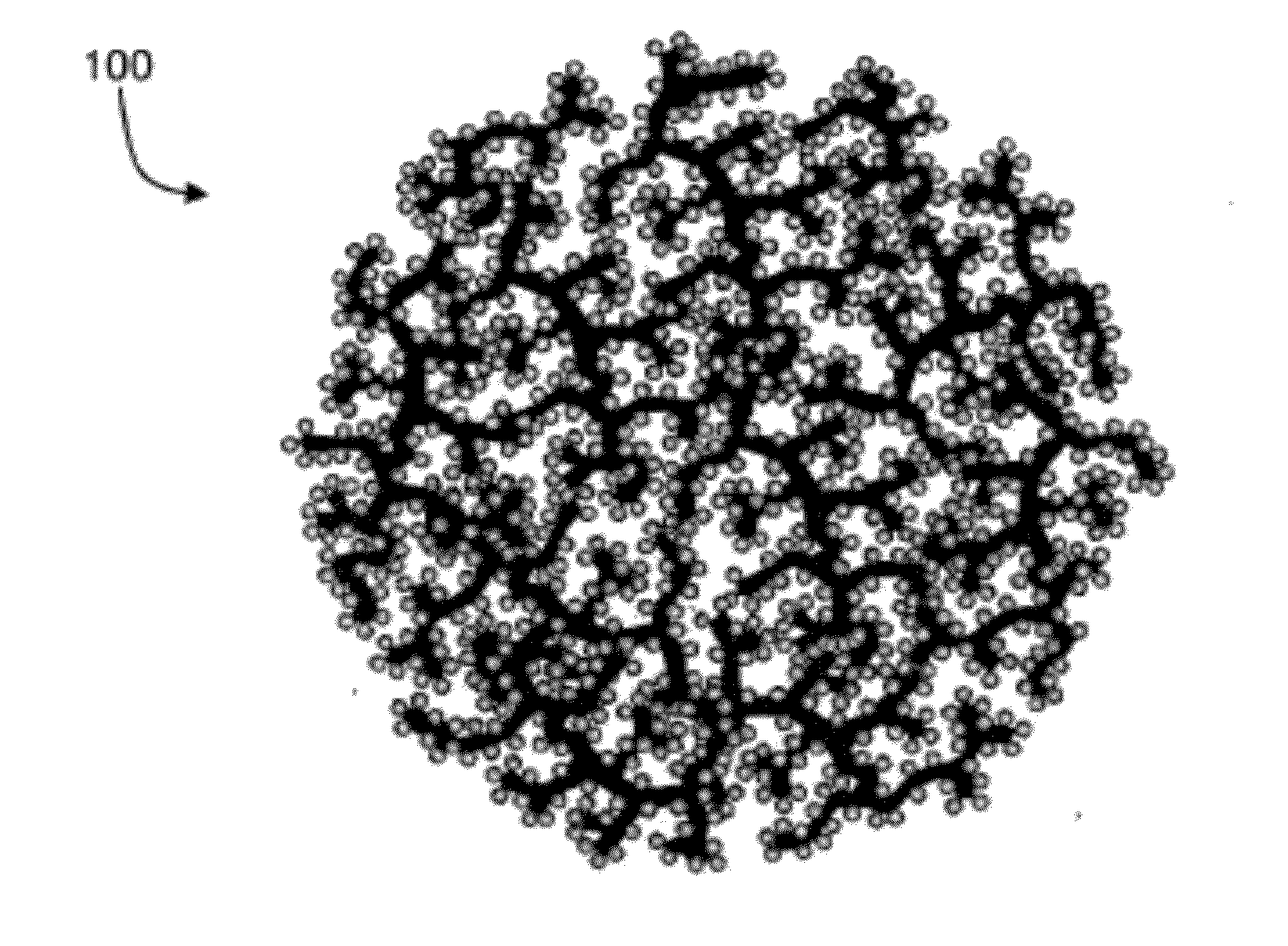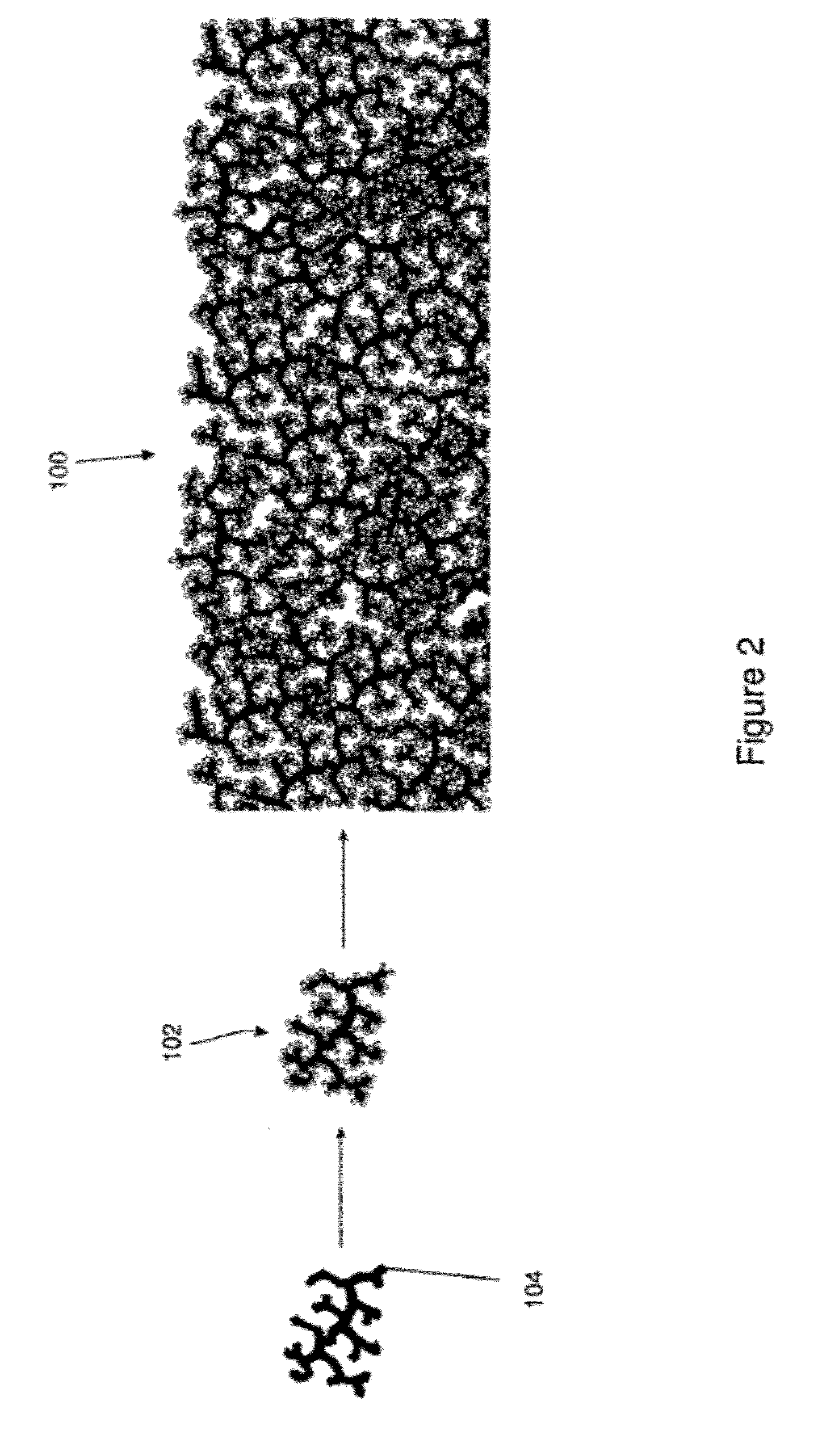Electrodes, lithium-ion batteries, and methods of making and using same
a lithium-ion battery and electromechanical technology, applied in the field of lithium-ion batteries, can solve the problems of silicon's own significant setback, significant capacity loss during cycling, irreversible mechanical damage to the anode, etc., and achieve the effect of enhancing electrical communication
- Summary
- Abstract
- Description
- Claims
- Application Information
AI Technical Summary
Benefits of technology
Problems solved by technology
Method used
Image
Examples
example 1
Fabrication and Characterization of Si—C Composite Anode Material
[0152]In this example, a hierarchical “bottom-up” approach was used to form Si—C porous composite granules with high capacity, stable performance, and particle size comparable to that of milled graphite (i.e., about 15 to about 30 micrometers). This powder size is commonly used in the production of Li-ion battery electrodes and does not possess the same inhalation hazard as nanoparticles. This “bottom-up” approach allowed for the fabrication of high capacity stable composite anodes with rapid charging capability.
[0153]Briefly, a chemical vapor deposition (CVD) synthesis process has been designed for depositing Si nanoparticles on the surface of carbon black (CB) nanoparticles, wherein the CB nanoparticles form short dendritic chains during high temperature pre-annealing. The about 500 nm to about 1 μm multi-branched nanocomposite was then self-assembled into large porous spherical granules during the atmospheric pressu...
example 2
Fabrication and Characterization of Coin Cells Using Si—C Composite Anode
[0161]Coin cells (2016) with metallic Li counter electrodes were employed to evaluate the electrochemical performance of the anodes produced in EXAMPLE 1. Working electrodes were prepared by casting slurry containing an active material (C—Si composite granules or graphite or annealed carbon black), a polyvinylidene fluoride binder (pure 9305 (Kureha) for carbon electrodes and 9305 with 10 wt % addition of polyacrylic acid for Si-containing electrodes; 20 wt % of the binder was used for annealed carbon black and for C—Si composite granules and 10 wt % for graphite) and N-methyl-2-pyrrolidone on an 18 μm Cu foil (Fukuda). The electrodes were calendared and degassed in vacuum at 70 C for at least 2 h inside an Ar-filled glove box (6 salt in an ethylene carbonate / diethyl carbonate / dimethyl carbonate / vinylene carbonate mixture (Novolyte Technologies). Lithium metal foil (1 mm thick) was used as a counter electrode. ...
PUM
| Property | Measurement | Unit |
|---|---|---|
| weight percent | aaaaa | aaaaa |
| galvanostatic charge | aaaaa | aaaaa |
| galvanostatic charge | aaaaa | aaaaa |
Abstract
Description
Claims
Application Information
 Login to View More
Login to View More - R&D
- Intellectual Property
- Life Sciences
- Materials
- Tech Scout
- Unparalleled Data Quality
- Higher Quality Content
- 60% Fewer Hallucinations
Browse by: Latest US Patents, China's latest patents, Technical Efficacy Thesaurus, Application Domain, Technology Topic, Popular Technical Reports.
© 2025 PatSnap. All rights reserved.Legal|Privacy policy|Modern Slavery Act Transparency Statement|Sitemap|About US| Contact US: help@patsnap.com



